004: The Western and Great Southern
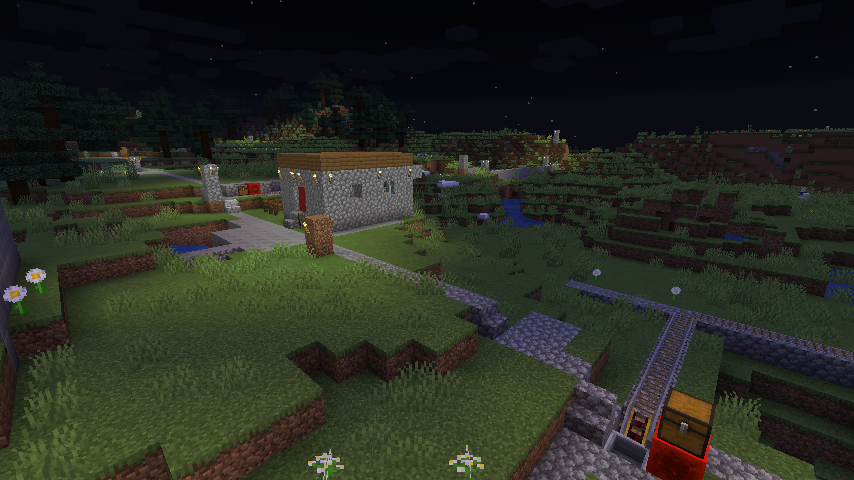
There are parts of running an empire that are just tedious. Moving goods and materials, for example. In a real Empire, there’s a lot of people and complex machinery and a constant flow, and it’s all done with parallel processing, all sorts of things that you just can’t do in singleplayer Minecraft. I am the train. (Don’t bother with the chest minecart and the furnace minecart, they still have to be loaded and unloaded.) There’s only one of me. I’m not scalable. Here we see the flaw in token ring communication as more nodes are added to the network. On the other hand, it brings home the sheer volume of labor required to make it all work, and gives me perhaps a bit more context for Marx and Engels and all that. Now, a phrase you’re probably never going to see in this blog outside of this example is “Marxist dialectic”. Having carried out my own Industrial Revolution, though, I begin to understand the epic scale of labor on raw display in his era, when Marx formulated his ideas about the power of the proletariat and the importance of owning the means of production. I’m writing this as I ride the railway that I built, transporting goods from a distant outpost to my stronghold at the center of Empire, and I cannot tell the pigs from the farmers.
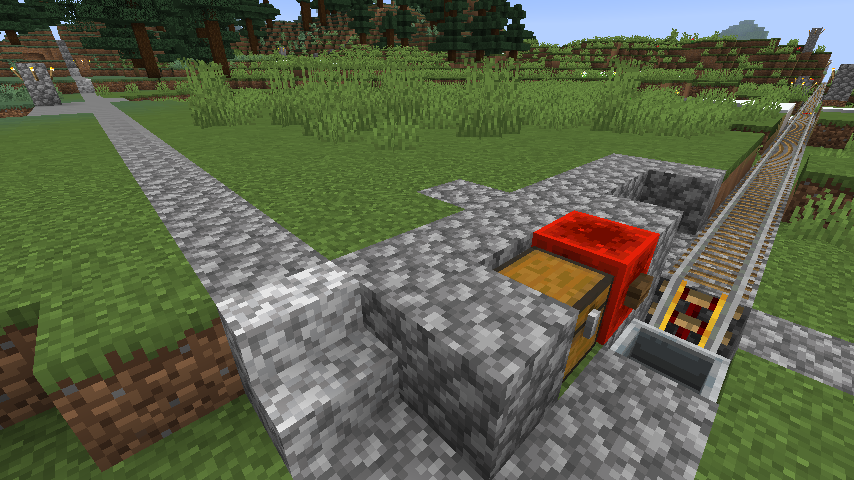
Let’s get some infrastructure built here. The Western railway started out as a cobblestone footpath going west from Outpost One, the first waystation I ever built, to explore in a safe way, marking the route back through a connection to a north-south path between Outpost One and my home at the Farm.
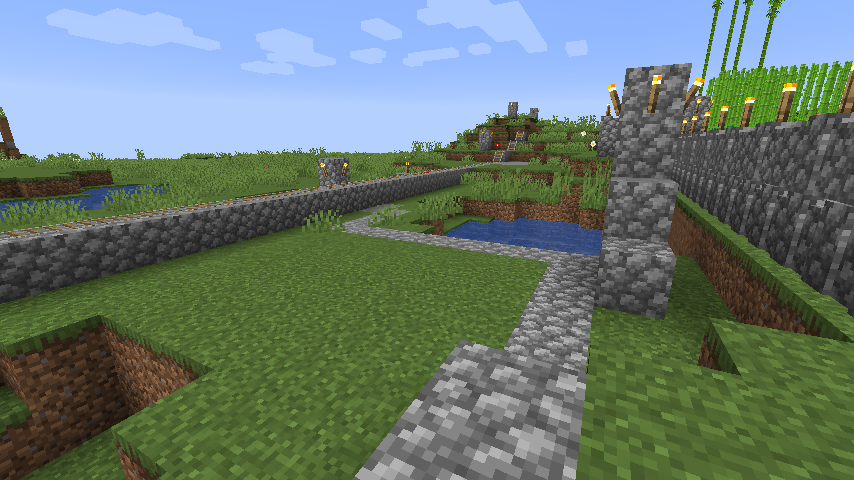
I had taken a couple of short runs west previously, but had been focusing more of my effort northward, where there was a mountain range within sight, and a village. The northern road got built up to the mountains, and Cliffside waystation put up, and I did a lot of mining, mountain biomes being good for that. The western route languished a bit.
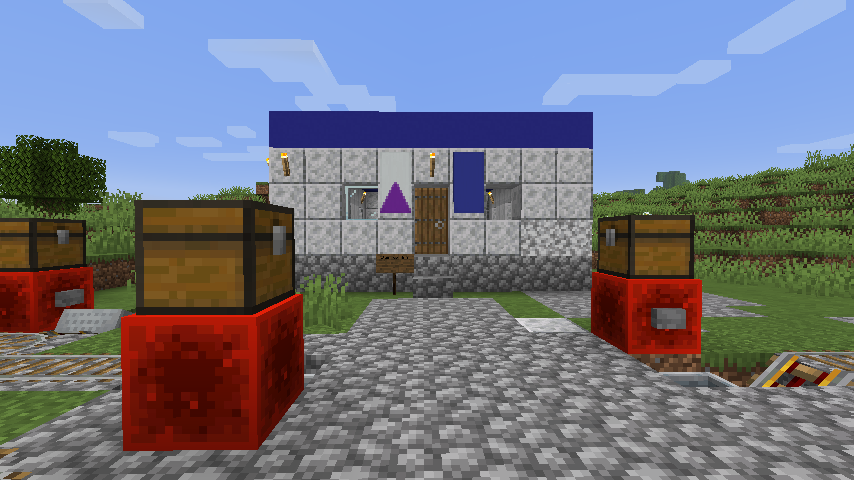
Then I got an idea for décor, and spent some time in the garden at the Farm making blue concrete in the pond. The Blue Roof Inn was built, and I discovered MineAtlas, which revealed a village far to the west. I started working my way West with the intent of reaching the village and exploring it. The road remained a footpath, though, a single line of cobblestone running up and down the hills, across the plains, eventually reaching a point where I needed to zigzag northwest to reach the village.
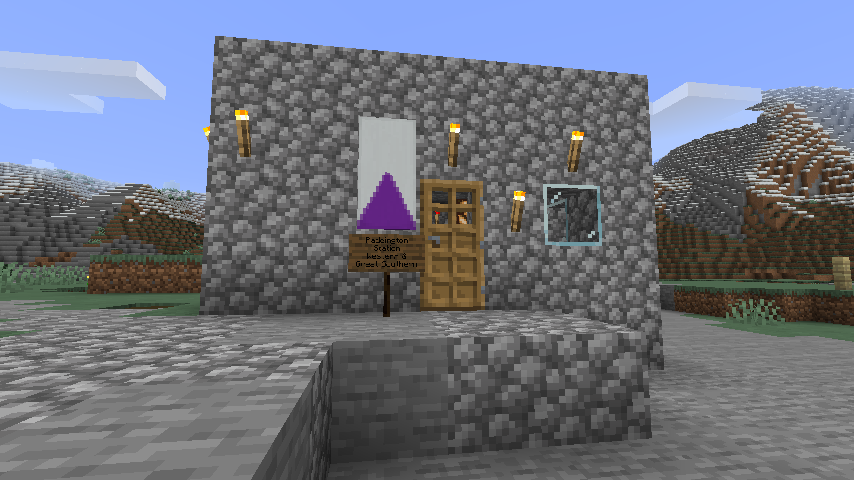
I built what would become Paddington Station on a raised area of rock so I didn’t have to level or clear, and explored the village on foot. There’s still a fencepost by Paddington where I rode my horse out a few times, bringing the materials needed to set up the waystation.
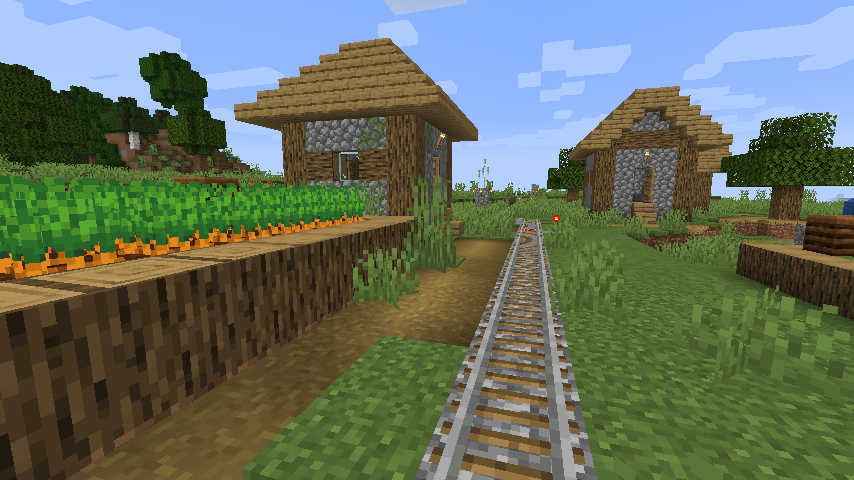
The Roman Roads linked up my waystations, gave me easy navigation, and had pylons with torches for safety lighting. This was about the point where I started thinking of myself as The Empire. When I ran a cobblestone footpath up through the first village I’d found, to link up the Farm and Cliffside, I called it a Roman Road and named myself as an imperialist. Most of it ran along the edge of the village, but part ran straight through, replacing the village’s mud footpath. I went around the buildings. Colonialists don’t tend to do so, they bulldoze the local’s homes to get at what they’re after.
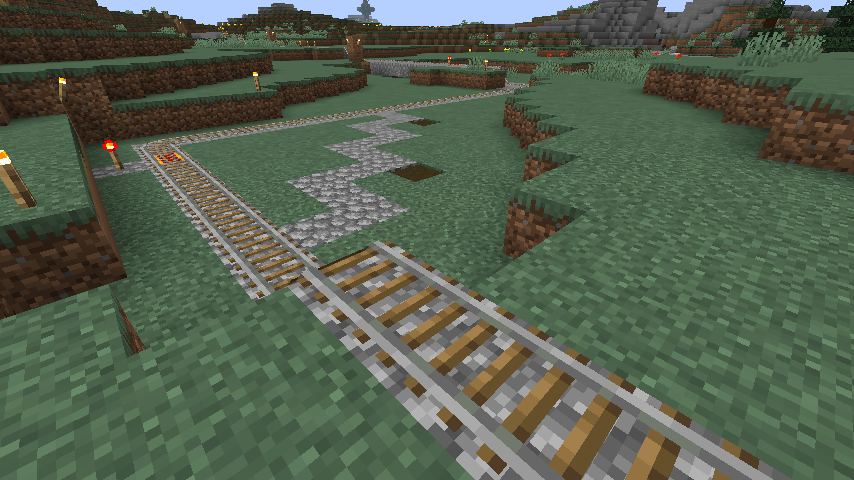
Then came rail, and I started converting the Roman Roads into Roman Rail. The Western route was tuned a bit, and I started getting the idea of leveling to grade and building bridges and causeways. The Western became the first long distance narrow gauge railway in the Empire. The zigzag got straightened out a bit, to a couple of turns, but you can still see the old footpath in place. Paddington became a mining camp, with considerable work done in the region.
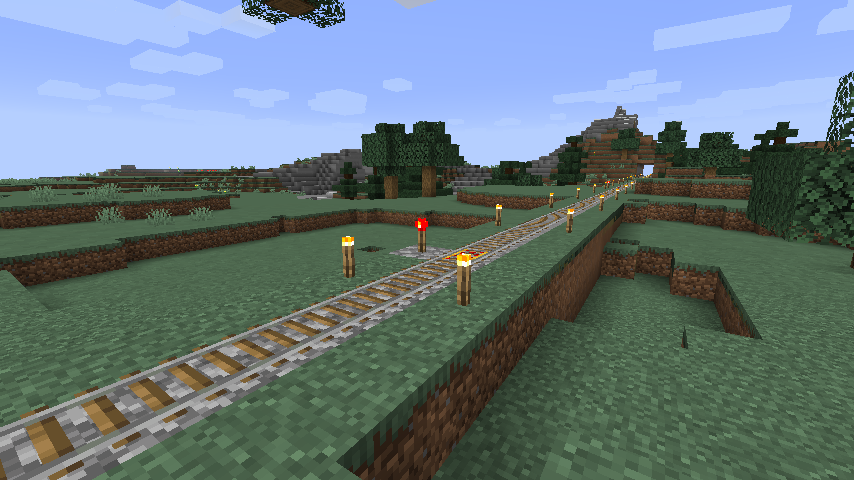
The Grand Concourse was built to put a mining road through the nearby mountain down to the sea. It used too many torches for decorative purposes, and a dirt roadbed instead of solid cobblestone, but it set the standard for future railways with the broad roadbed and a torch every 6 blocks, like I use for deep gallery mining, marking distance and maintaining an even illumination level along the railway.
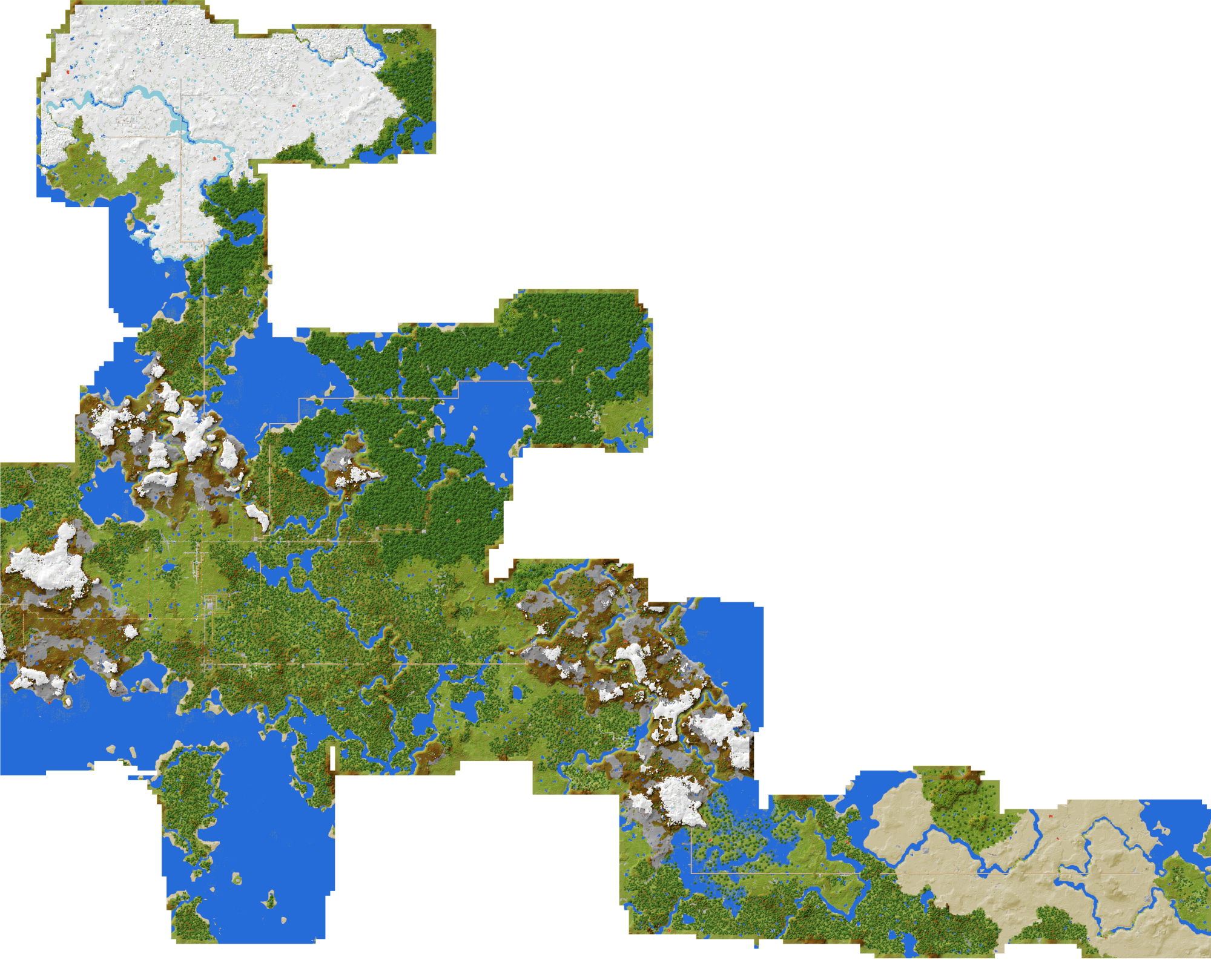
The Great Eastern came next, then the Great Northern. I’ll talk about them in later series if I get there. For now, I want to focus on the Great Southern. It started because of Chunkmapper, and my discovering that there was a Woodland Mansion at -3300, 3030 approximately. That was reachable, although a serious long distance and a high grade level over water. I spent a lot of time duckwalking backwards, using the Shift-S trick to build bridges.
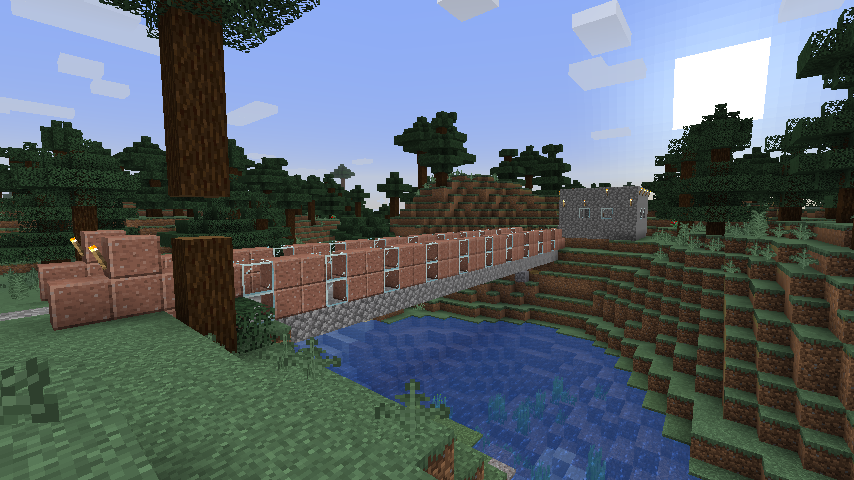
Over the course of building the Great Eastern and reaching the two desert temples, and the Great Northern and reaching a second jungle temple (the first had been on foot and resulted in my best bridge to date) and a stronghold, I gave some thought to the Great Southern project. It would be massive, I knew that, and would give me many hours of playtime building it, but there would need to be a lot of preparation. I spent considerable time mining, both prospecting for iron for rails and gold for powered rail, and cleaning out abandoned mineshafts for the rail they contained. Reduce, reuse, repurpose. I started the build from Paddington, in the process giving it a name.
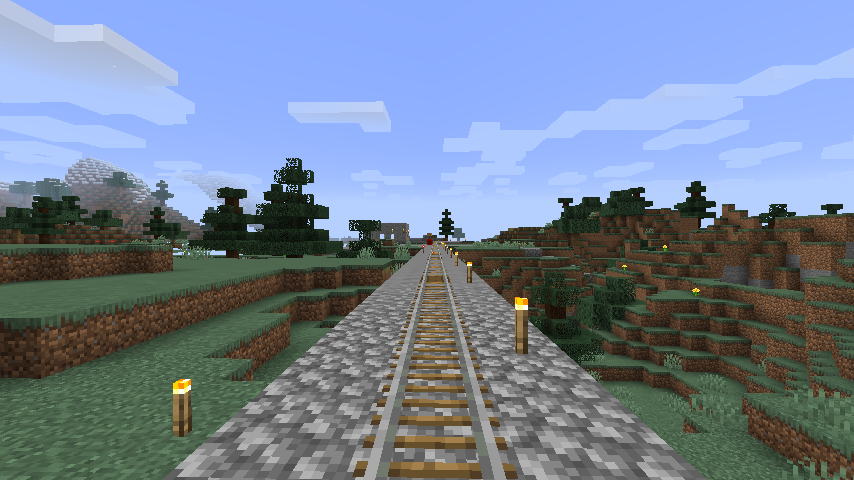
From there, I drove westward with a broad-roadbed railway, building the roadbed of cobblestone where native stone wasn’t at the right level. The starting point, at Paddington, was at a high grade, at 80 blocks, so I had to bring that down a bit, coming down to 76 for most of the northern segment which led through a lot of mountains, then coming down to 72 on the southern run. This kept me well above the ground through a lot of the railway, and away from mobs, so that I could build through the night.
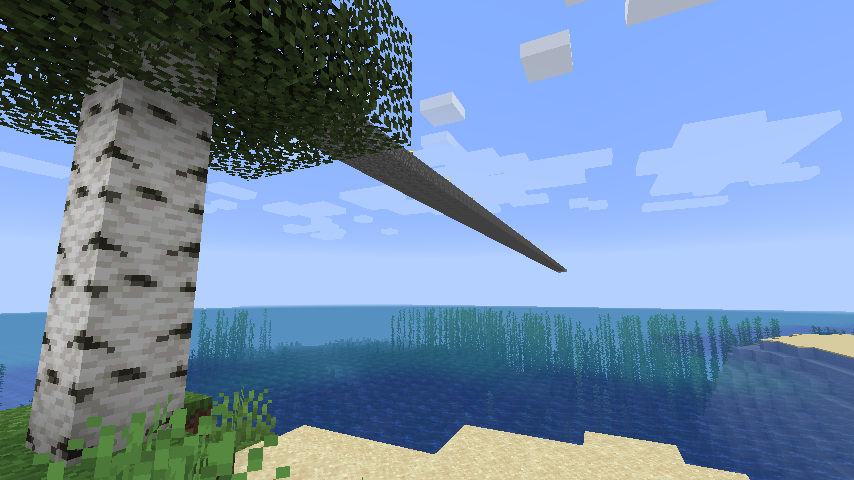
I did get knocked off the skyway by a phantom while building the Trans-Oceanic bridge, when I lost count of how many nights I’d been working through. No biggie, I swam to the nearest land, chopped down a tree, made a crafting table, made a boat, and rowed back to the start of the bridge.
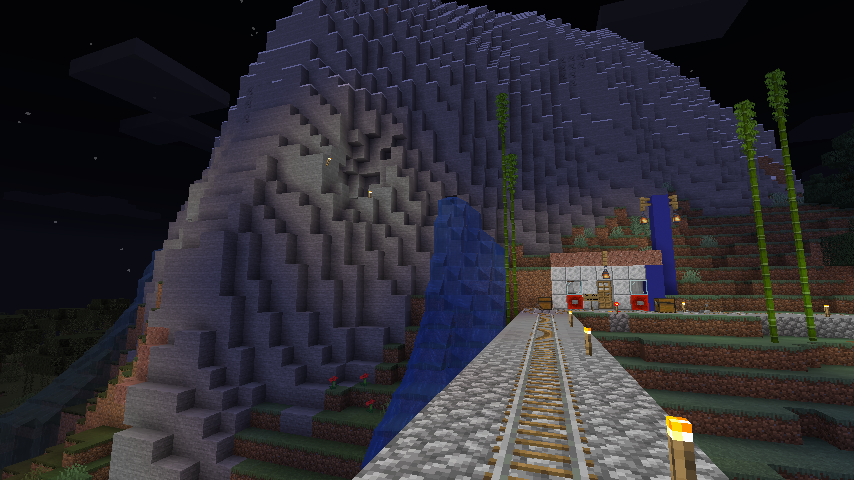
Stations were deliberately much further apart, as I was now measuring by rail travel rather than walking speed, the reason the first waystations were so close together. I wanted to be able to get from one to the next in the same day at the time. Since then, I’ve lost most of my fear of traveling at night.
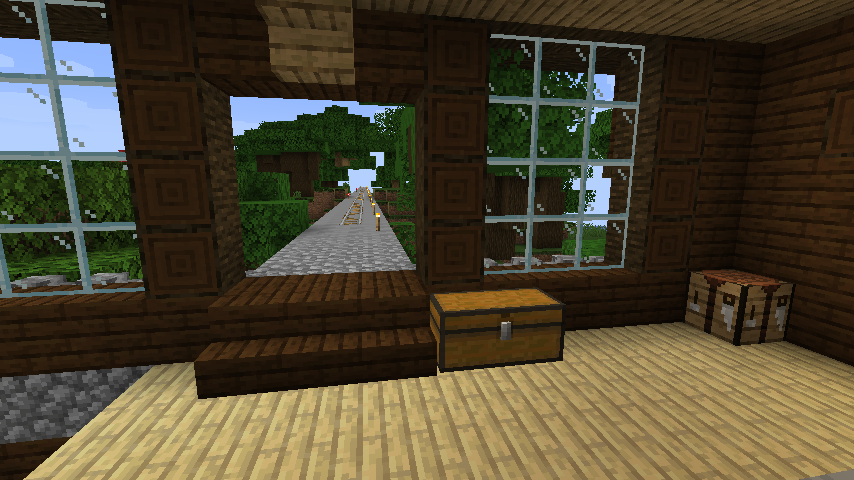
After considerable effort and many adventures along the way, the Great Southern finally reached the Woodland Mansion, and what happened then will be covered elsewhere. I’ve also got articles planned for each of the stations along the way, as they vary considerably in décor and somewhat in layout, despite my having a formalized plan for them.